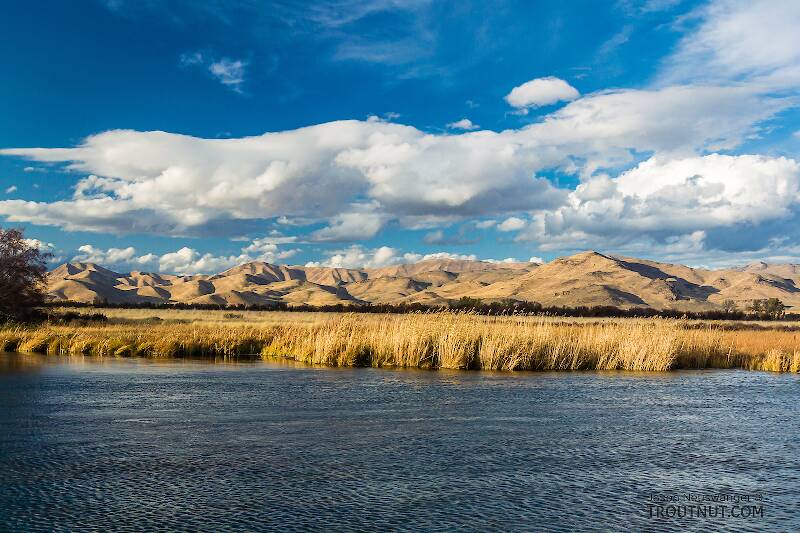
Blue-winged Olives
Baetis
Tiny Baetis mayflies are perhaps the most commonly encountered and imitated by anglers on all American trout streams due to their great abundance, widespread distribution, and trout-friendly emergence habits.


Mayfly Species Tricorythodes allectus (Tricos)
Where & when
This species is probably the most abundant Tricorythodes in the East and Midwest, behind Tricorythodes stygiatus.In 29 records from GBIF, adults of this species have been collected during September (31%), August (31%), July (21%), October (10%), and June (7%).
In 2 records from GBIF, this species has been collected at elevations of 4659 and 5955 ft.
Species Range
Physical description
Most physical descriptions on Troutnut are direct or slightly edited quotes from the original scientific sources describing or updating the species, although there may be errors in copying them to this website. Such descriptions aren't always definitive, because species often turn out to be more variable than the original describers observed. In some cases, only a single specimen was described! However, they are useful starting points.
Male Spinner
Wing length: 3.5-4.5 mm
Thoracic notum dark red-brown; femora and tibiae with many black flecks and streaks.
Head and pronotum pale brown; pronotum with blackish lateral markings and minute dark flecks over entire surface. Remainder of thorax darker red-brown. Fore femur pale red-brown with yellowish areas; middle and hind femora similar in some specimens, in others largely yellowish; all are heavily flecked and speckled with black. Fore tibia of male smoky grey, paler next to dark basal band; other tibiae whitish with similar dark bands at base, and variably flecked with black in median area. In specimens preserved in alcohol, a reddish median band may be present. Fore tarsus pale smoky; others whitish, distal joints pale smoky. Ground-work of abdominal tergites pale yellowish brown; in most specimens, more or less heavily overlaid with blackish except on lateral areas of middle segments; anterior and posterior margins of tergites may be narrowly black. Short black streaks on lateral margins of middle and apical tergites. Sternites paler, with faint red-brown tinge; indistinct grey marks near pleural fold, and obscure smoky tinges on median and lateral areas. Tails pale, tinged and margined with blackish in the basal areas. Genitalia as in Tricorythodes atratus (now a synonym of Tricorythodes allectus).
Described as T. atratus
Body length 2-3 mm, wing length 4-4.5 mm
Very close to T. allectus, but with darker head, pronotum and femora; same black speckling on femora and middle of tibiae.
Head dull blackish, slightly reddish between eyes; eyes and posterior ocelli black. Pronotum blackish, with black lateral patches. Remainder of thorax deep black-brown; paler areas on pleura at bases of legs and at wing roots. Coxae and trochanters brownish, shaded faintly with smoky. “Femora smoky grey, overlaid to a varying extent with black streaks and dots, tending to coalesce to form an apical band which at times (especially in alcohol material) shows a ruddy tinge” (McD.). Fore tibia brownish; middle and hind tibiae dull whitish; each has a black spot at base, and blackish markings near the middle, which may have reddish appearance. Fore tarsus pale smoky; middle and hind tarsi whitish. Abdomen of a dirty grey ground color, more or less completely overlaid with blackish dorsally, except on the lateral areas of middle segments. Anterior and posterior margin of each tergite with narrow black streaks; a row of small black spots near pleural fold on each side. Sternites dull smoky grey. Tails pale; basal area tinged faintly with smoky grey. Apical margin of forceps base deeply excavated in median area (see fig. 160).
Female Spinner
Wing length: 3.5-4 mm
All tibiae pale, in female specimens.
Start a Discussion of Tricorythodes allectus
References
- Caucci, Al and Nastasi, Bob. 2004. Hatches II. The Lyons Press.
- Knopp, Malcolm and Robert Cormier. 1997. Mayflies: An Angler's Study of Trout Water Ephemeroptera . The Lyons Press.
- Needham, James G., Jay R. Traver, and Yin-Chi Hsu. 1935. The Biology of Mayflies. Comstock Publishing Company, Inc.
Mayfly Species Tricorythodes allectus (Tricos)
Species Range
Common Names
Resources
- NatureServe
- Integrated Taxonomic Information System
- Global Biodiversity Information Facility
- Described by Needham (1905)

